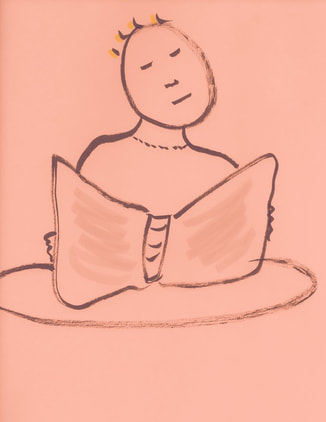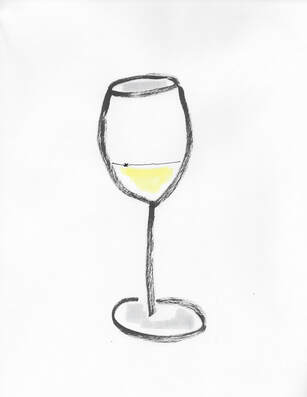 Should a wine list the size of a bible drop into your hands, don't break into a cold sweat. Should a wine list the size of a bible drop into your hands, don't break into a cold sweat. Does the thought of ordering wine at a restaurant make you nervous? The bigger the wine list, the easier it is to feel intimidated by the number of choices, the staggering prices and the embarrassment of “getting it wrong.” For this reason, many people pass the list over to the person at the table who is the most willing to take on the daunting challenge or perceived to be a wine connoisseur. Should a list the size of a bible drop into your hands, don’t break into a cold sweat. At best, this is your opportunity to explore beautiful choices from wine regions around the world. Your pulse will be racing not from the fear blooming in your chest but from the excitement of choosing from a tasty lineup of Pinot Grigios or Merlots, for instance. Taking command of the situation also saves you from enduring someone else’s dull choice of an overpriced label available at the supermarket around the corner. After all, dinner out should present you with new culinary and beverage experiences, not the same old safe choices. While ordering wine at a restaurant may seem fraught with obstacles and wrong turns, it is also an opportunity to personally grow in your understanding of wine and have fun doing it. No, do not fret, dear wine lover. Instead, embrace these tips to order wine like a boss and up your game with increasingly savvy selections at any restaurant, anywhere. Take your time. As you look through a restaurant’s wine list, it is all too common to feel pressured into making a quick choice as the server taps her foot expectantly, waiting for your order and your thirsty dinner companions look on with anticipation. The more you know about wine, the more your companions will expect you to dazzle them with something unique and first rate. If you pick too quickly, however, you may miss finding a bottle that would be the night’s star. At worst, you may be told that the bottle you selected is unavailable and find yourself paying twice the price for a poor substitute, much to the chagrin of those also paying. So here’s how we are going to get started. On your next date night, keep in mind that making the wine selection is not a race. In fact, take all the time you want. You’re in charge here. You own the room. Breathe in and relax as though you are in your own living room, but please be sure to wear your pants and not just underwear. Don’t forget your shoes. Don’t worry about the size of the list. For sure, a small wine list is comfortable, especially if the labels have been thoughtfully selected. In the case of a small list, I look for unusual offerings and place my order posthaste. Maybe it is a wine grape I have never heard of or a producer that piques my interest. Some people just look for the second least expensive glass or bottle on the list and place an order. A large wine list can be initially alarming, but it also means you are likely to find gems at a price point that suits your budget. Start with a bubbly. If you fear you will crack under the pressure of having to make a timely decision, order a fun, inexpensive sparkling wine by the glass for you and your drinking partner right away. Something like a Cava from Spain or a Prosecco from Italy. Sparkling wine is a merry way to start a meal and it lends an air of celebration. Life is good when you can celebrate, even if it is on a Monday night. While drinking the bubbly, ask your partner about what he would like to drink so you can factor in his preferences. Approach a huge list like you would a coffee table book. Don’t you just love coffee table books? Instead of big pictures, you are looking at big countries. Big deal. You’re a citizen of the world. If you need reading glasses, put them on now. Please don’t be that person who uses a phone flashlight to read the list; it is distracting to others. If the room is too dark for reading, ask the server to put a candle on the table or leave the room to find better lighting. Review the wine list and see what’s on offer as you sip your bubbly. So far as everybody in the restaurant knows, you do this every night of the week. Pair your wine selections with the food. Traditional food and wine pairing guidelines will help you get some ideas going. Highlights of pairing include selecting food and wines from the same geographic area. A Chianti Classico is a good match for pasta dishes with red sauce from central Italy. You can also match key flavors in your food and wine. Salads with citrus dressings offer a clear invitation to match wines with aromas of lemons or limes such as a Sauvignon Blanc from New Zealand. Bring together contrasting but complementary flavors. Carne asada tacos can be paired with a light-bodied, crisp German Riesling to create an entirely new taste sensation. Pair acidic or spicy food with light-bodied, fresh and crisp whites or reds. Match the intensity of the dish and the beverage. When we talk about the intensity of a dish, we are usually thinking about the amount of fat and/or boldness of flavor. For instance, ribeye steaks, with their juicy fat, can be paired with a Nebbiolo or a Cabernet Sauvignon. If you are unsure about how to pair your wine with the food, do a quick internet search on your phone such as “wine pairings for salad with balsamic vinegar dressing or wine pairings for steak au poivre." Consider a few candidates. Do you want a red, a white or a rosé? Another sparkling wine? The list will likely be organized by region, grape variety or by wine characteristics. Take a mental trip through the list, noting prices. After you have calmed down and spotted two or three choices that look promising, do one of two things: pick one and place your order, or ask for a second opinion from the server. My vote: second opinion, unless you come to realize during the conversation that you know more about wine than he does. When speaking with the sommelier or server, point to two or three wines that have caught your attention. This helps the somm understand your desired flavor profile and, just as importantly, the price range that is in your comfort zone. A good somm will know about the hidden treasures on the list. Go for what is suggested, unless the price is above the price range you have indicated. And don’t be afraid to ask questions. Nobody knows everything about wine and you will learn much more quickly if you ask questions and keep an open mind. Even wine “experts” tend to specialize in certain wine regions because it is impossible to know it all. That’s the charm of wine: it is a lifelong learning experience. Should you go by the glass or invest in a bottle? That is up to you. Generally, you will pay more by the glass if you have more than two or three glasses. However, it can be a lot of fun to have a new glass of wine with each course and this approach allows for more exploration. When ordering by the glass, some restaurants allow you to select small, medium or large pours, usually described in ounces. I love this option because I can order the smallest pours of multiple wines to experience a number of varieties, makers, wine regions, and winemaking techniques. One downside of ordering by the glass: once a bottle is opened, the wine begins to spoil. Some opened bottles sit for several days before being poured out. If your wine tastes off, ask the server for a second opinion. She will likely open a fresh bottle for your pour.  The server "helpfully" pointed out the bug in my Chenin Blanc. The server "helpfully" pointed out the bug in my Chenin Blanc. Stay alert: not all advice is good advice. As you know, there are good advisors and there are bad advisors, in life and in wine. Most of the advisors you will encounter are good to great. A bad advisor will suggest wines that are well above the price point you have indicated. In that case, go with one of your original choices. Watch out too for the bait-and-switch. “Oh, we don’t have the wine in stock, can I bring you out a blah-blah-blah?” In answer, ask to see the substitute on the wine list so you can furtively review the price before you agree. Bad advisors thrive in venues that count on tourists. I had a server in such a place tell me that there was a bug in my glass of Chenin Blanc; he offered to help. “How nice is that?” I said to my guest as we enjoyed our seafood dishes on the patio. The server brought out an empty glass, then picked up the bottle from the table and poured. He then added wine to the original glass with the bug in it and took it away for his own consumption, much to our surprise. I suppose that was a bug and switch. The location was New Orleans, a town that I treasure and visit each year. But you never know. The same server had earlier suggested an eighty dollar wine bottle when the original forty dollar bottle I requested was out of stock. I had told him to offer something more in line with my original price selection. Luckily, such experiences are unusual, but it does not hurt to be aware and in charge of your dealings in wine. The more you get over your fear of wine lists and build your confidence and experience, the more skillfully you will react in any situation. Places that count on locals for repeat business can be more of a sure thing, especially if you make an effort to frequent their establishments. Even in touristy areas I do my research to find the best restaurants and wine bars and visit them repeatedly if they meet my expectations. Most restaurants and bars live or die on repeat business and they want to build a longstanding relationship with their customers. Consider this final tip. If you plan to invite an important person or crowd to a restaurant soon, why not get a leg up on your wine selection? In other words, do your homework. Here is what I did recently: a few days before an important evening of guiding a wine tasting, I sat down at the restaurant’s bar and asked the server to take me through a few wines by the glass that I thought were good candidates for the tasting. I was excited to try a Mencía from the Bierzo region of Spain because I had enjoyed that variety in the past and not many people know about it. The server suggested I try a Sonoma Coast Pinot Noir from Anthill Farms Winery. I had initially missed seeing this offering. The Pinot Noir was by far more exciting than the Mencía and I offered it with excitement on the night of the wine tasting. While it can be stimulating to introduce a new variety to wine lovers, my pre-tasting brought home the fact that a well made wine of any variety can win the day. Pair these tips with a fearless attitude and you can look forward to meeting the challenge of the very largest and most elaborate wine list any restauranteur places into your hands. And remember, it’s just wine, not an exam that will affect your future earnings. I would further postulate that being willing to experiment in your wine selection makes you a more attractive date. After all, who doesn’t like a bit of spice and adventure in a relationship? Have fun with selecting wine and forgive yourself for the occasional misstep . . . as does every seasoned wine lover. This article is partially excerpted from my new book, Your Love Affair with Wine: How to Meet and Fall in Love with a Bottle of Wine, available on Amazon.
0 Comments
|
AuthorLyne Noella Archives
October 2022
Categories
All
|


 RSS Feed
RSS Feed
